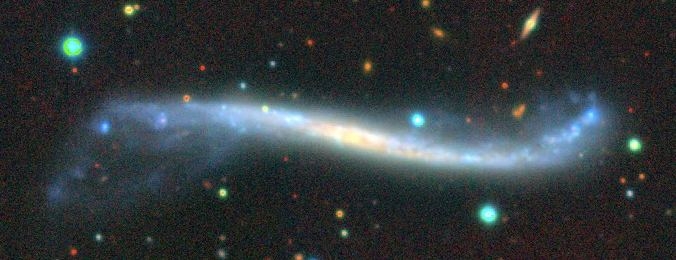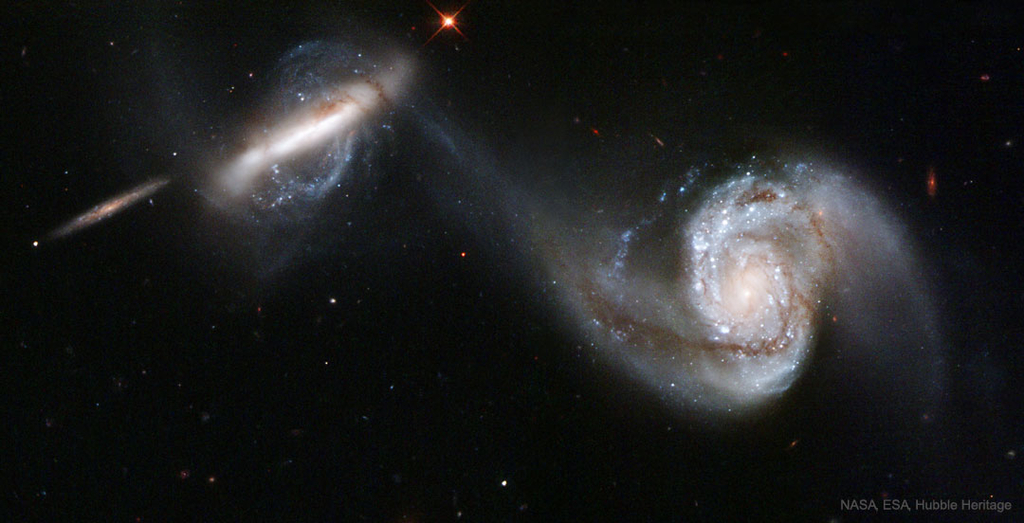The Milky Wave
Bringing together data from the Sloan Digital Sky Survey and the GAIA space telescope, astronomers were able to determine the shape of the Milky Way more accurately, as well they noticed that our galaxy’s spiral arms do a wave!
Deep-sky observations reveal that spiral galaxies are the most common type of galaxies, and that 50-70% of them present a wave-like distortion. The challenge in verifying whether a similar phenomenon occurs in the Milky Way is that we can’t observe it edge-on, we are limited to the data we can acquire from Earth and nearby space telescopes.

One method that helped astronomers tackle this question is the Sloan Digital Sky Survey (SDSS), which is a redshift survey: since 2000 and with three telescopes around the world, SDSS astronomers obtained the spectra of over 4 million objects and photometric data for over 1 billion. Using the Apache Point Observatory Galactic Evolution Experiment (APOGEE) spectrograph, more precise measurements for stars in our galaxy were made. These were then combined with the astrometric data obtained with ESA’s GAIA space telescope, mainly the distances to hundreds of thousands of stars.
With this information, it was possible to gain an understanding of the way our galaxy’s stars move in 3D-space. Something that is observed in the many galaxies with a wave-like perturbation is that stars will oscillate up and down with respect to the galactic plane – the results from the SDSS and GAIA show that this is the case in the Milky Wave. From there, a team led by Xinlun Chen at the University of Virginia, established not only that our Milky Way has a warped shaped, but also that there is a “wave” rippling through it, about once every 440 million years.
The obvious question to ask next is why is this the case? If you’ve read the “What is a galaxy cluster” article, you’ll be familiar with the idea of galaxies interacting gravitationally, sometimes even colliding and merging. The preferred hypothesis to explain the wave in the Milky Way is that about 3 billion years ago, a nearby galaxy collided with it, causing the ripple that we still observe today. Knowing that in about 4.5 billion years, the Milky Way will be subject to the next collision, this time with the largest galaxy of the Local Group the Andromeda galaxy, astronomers can study the frequency and effects of these intergalactic events. A more precise computer simulation of the Milky Way – Andromeda galaxies' collision is a project that could build on Chen and his team’s study.

In the meantime, you can watch a simulation of the wave in the Milky Way at: https://youtu.be/azve6LUHZZA. The difficulty in representing the phenomenon is, among others, that the incredibly bright central bulge of our galaxy doesn't allow astronomers to observe the "other side" of the Milky Way. Again, it's by comparing with other barred spiral galaxies and by studying the properties of the stars we do observe, that a model for our galaxy can be established.
Cover Image: The Wave in the Milky Way, SDSS
Image Credits:
1- The Integral Galaxy, DECaLS
2- Arp87, NASA/ESA/Hubble Heritage
